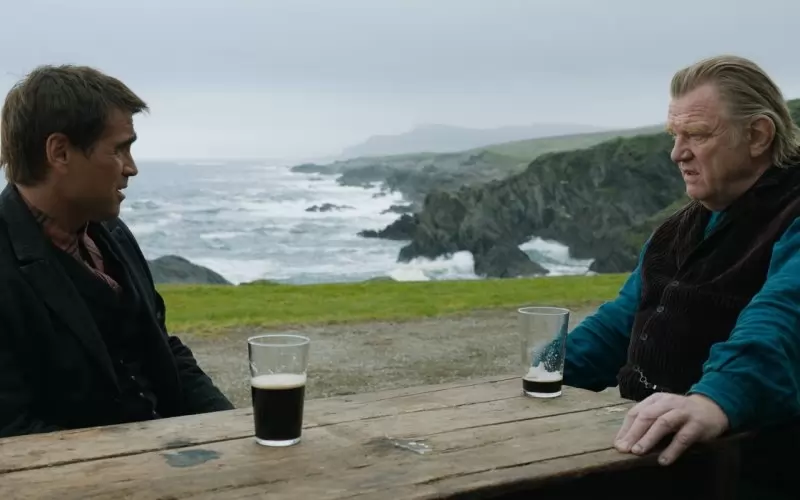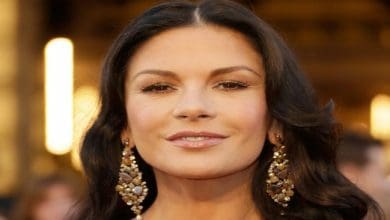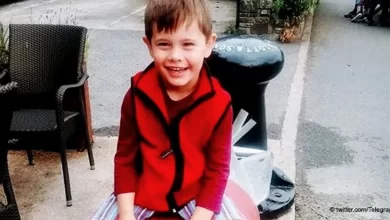McDonough’s Ghosts and Psychopaths

“The Banshees of Inisherin” is the most deserving “Oscars” this year
The numerous nominations and awards that Martin McDonough’s films receive are a sign that no matter how many times comic book heroes save the world, a well-told and well-acted story will always be in fashion. With three Golden Globe awards – for best picture, screenplay, and actor, “The Banshees of Inishreen” looks like the clear and consensus favorite for the upcoming Oscars. The Irish playwright has received the prestigious statuette only once – for his short film debut Six Shooter, although he has been nominated three times for original screenplay (“In Bruges”, “Three Billboards Outside the City” and now) and twice for best film.

If you liked their strange characters and their Irish accent in “In Bruges”, you will be blown away here.
McDonagh is a legend in modern drama: he took over the London stages when he was only 26 years old with his debut play “The Former Miss of the Small Town” (also staged on the Bulgarian stage), he is also popular in our country – with “The Fluffy” and “Handshake in Spokane” by Yavor Gurdev, with “Executioners” by Stoyan Radev, “The Lonely West” by Vladimir Lyutskanov, etc. But if in the stage life of his texts he relies on someone else’s direction, in the cinema he always “stages” them himself. He relies on a trusted cast proven in at least two of his four feature films. Colin Farrell and Brendan Gleeson reprise their stunning duet from In Bruges. There was a pair of hired killers, one inexperienced and simple-minded, the other older, wiser, and hardened, whose friendship developed and ended tragically amid the gothic decor of the Belgian city. Their character, intellectual, and generational differences stand in a similar way in “The Banshees…”, where the setting of their relationship is a small island off the coast of Ireland. Inisherin is a fictional corner of the land where the limitations of territory and spirit are crushing. Beyond pours the deafening rumble of the Irish Civil War (1923), and it’s easy to imagine the fratricidal conflict the characters engage in as a micro-level metaphor for it.
And so, “Todora has gone to sleep” sounds in a performance of “The Mystery of the Bulgarian Voices”, the generous green hills of the island spill into the frame, and Padric (Farrell) walks to the lonely house of his friend Colm (Gleeson) to call him for the daily beer in the only pub. But Colm rejects it. The argument is stupid and ridiculous – you’re boring, says Colm, you talk to me about your donkey’s poo for hours, and I want to play the violin, ponder philosophical questions, and leave something behind in this mortal world. Good-natured and simple-hearted Padric cannot fathom this twist and decides to fight for the long-standing friendship that brings structure and meaning to his mundane country life. From there, male stubbornness escalates into a series of misadventures, reaching (almost) an ancient tragedy. And just as in Chekhov the rifle that hangs on the wall in the third act thunders, so the shears for shearing wool in McDonough become an instrument of mutilation. The drama is micro-sized but with an existential rumble. Isolation, loneliness, limitation, prejudice, moral primitivism, Irish national stereotypes, the transformation of trauma into violence, of loss into cruelty, of good into bad – from these elements the Irishman sculpts a parable blown by a north wind and sprinkled with dark humor. Yes, there’s no way a hopeless story like The Banshees of Inishrein, where ghosts (banshees in Irish folklore) portend death, is a “comedy/musical” as classified by the Golden Globes jury, but this is McDonough: the outbursts of an unsuspecting brutality and laughter go hand in hand.
The acting is at the level of the text and beyond: all four important actors in “The Banshees” received well-deserved Oscar nominations. The brilliant Kerry Condon (also played in “Three Billboards Outside the City”) and the boy who grew up in shelters Barry Keoghan (his filmography also includes the Bulgarian “And Then Light”) complete the inisherin square. Condon is Padric’s unmarried, tirelessly reading sister, who is the only one with the strength to escape the stifling embrace of the countryside and the banshee’s slit: her brightly colored coats are a ray of salvation in cinematographer Ben Davies’ majestic but almost monochrome shots. Keogan, on the other hand, is the village muncho, accepted only by the brother and sister. In this story about the loss of innocence and the loss in general, the animals also play decisive roles – Padric’s donkey and Colm’s dog, speechless witnesses of the storm in the souls of their owners.
Unlike McDonagh’s previous three films, which successfully fit into a genre matrix, Banshees of Inisherin strips away the genre’s limitations and offers drama(turgy) stripped to the bone and honed to perfection. A fusion between theater and cinema of the highest quality.



